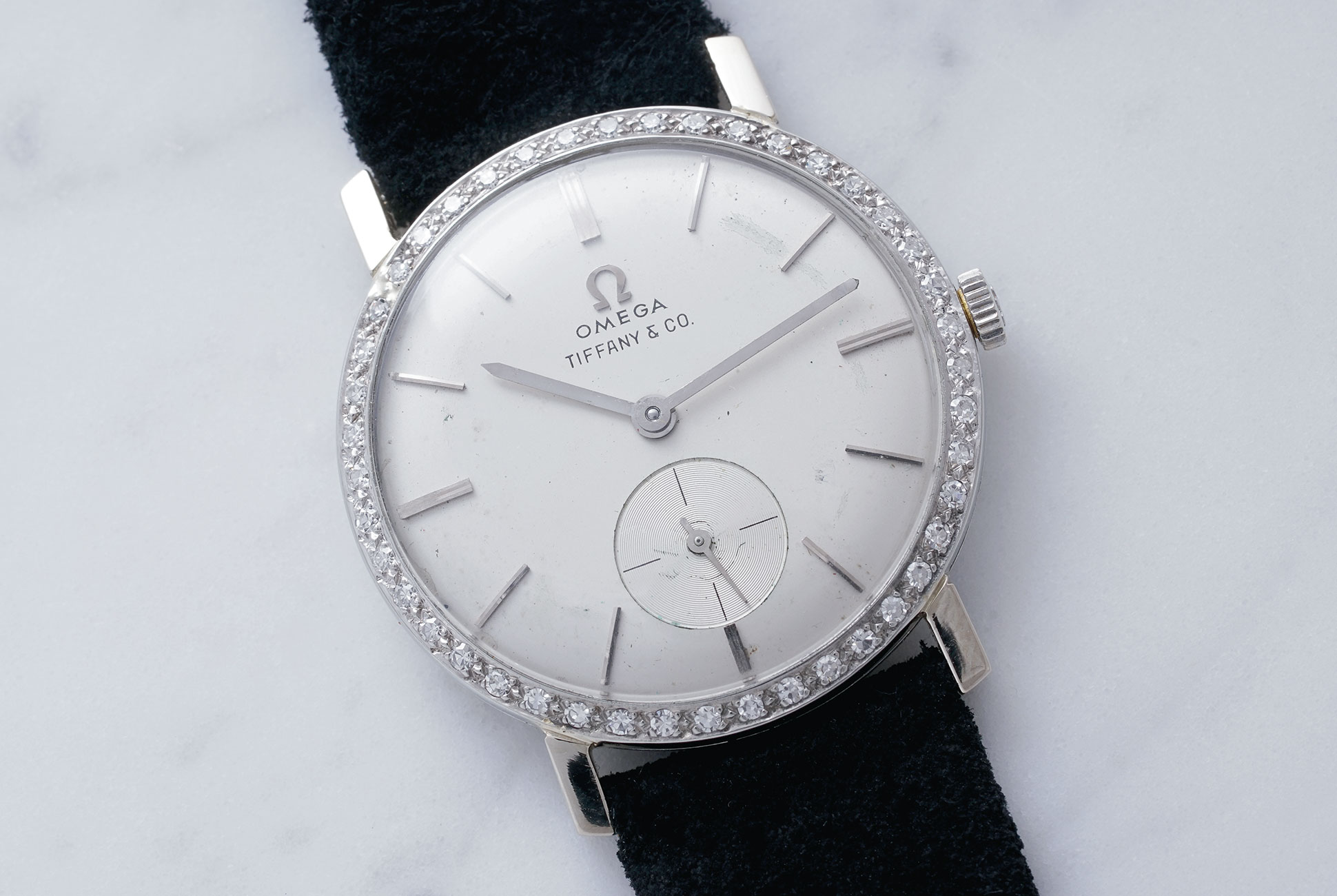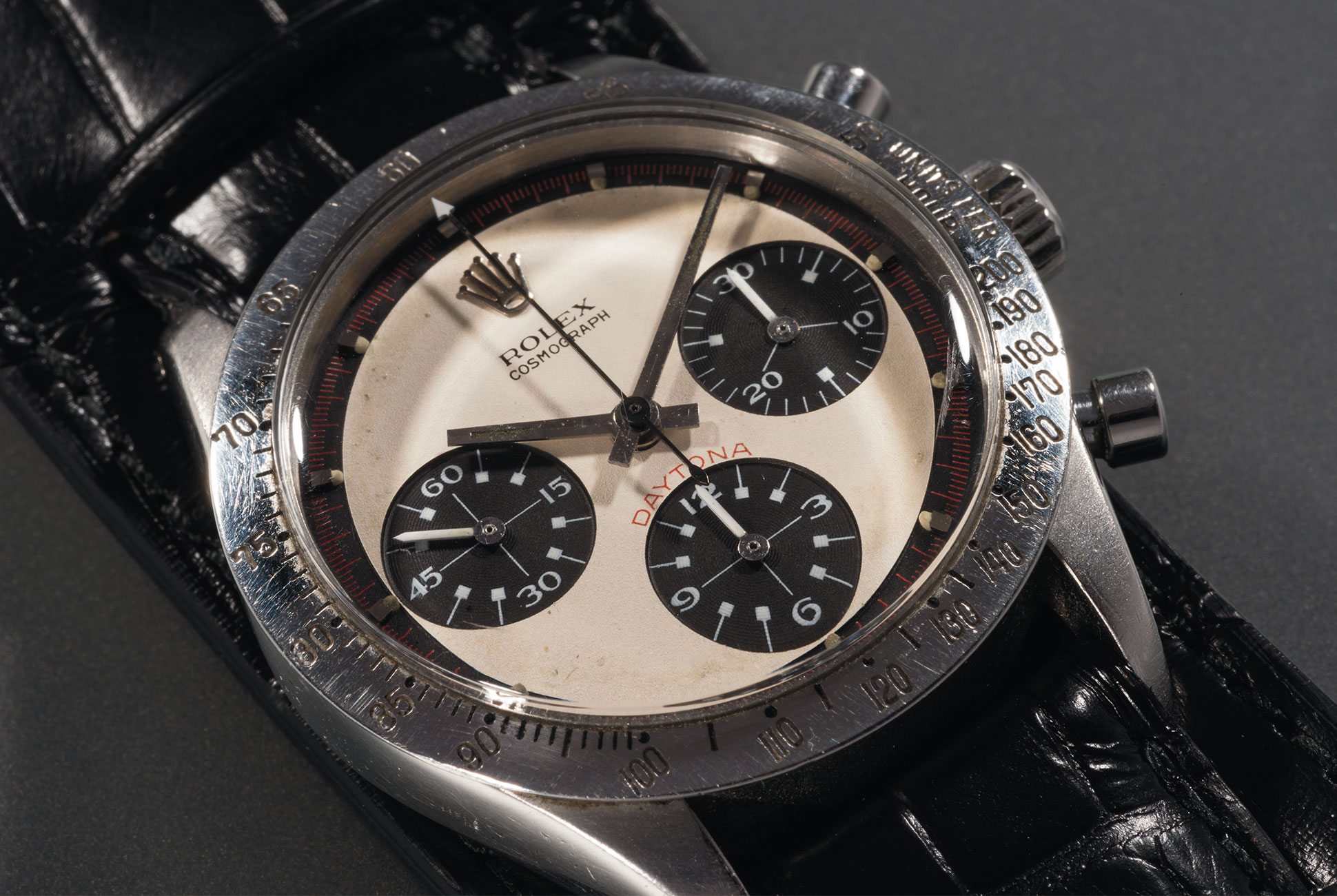Over the past three decades, the 48-year-old Aurel Bacs has worked in or consulted for the watch departments of the world’s biggest auction houses. And though the Zurich native won’t take credit for the market’s meteoric rise during that time, he remains an important witness to its radical growth.
Since 2013, Bacs and Livia Russo, the equally formidable auctioneer who happens to be his wife, have led Bacs & Russo, an independent consultancy that curates auctions for Phillips. Paul Newman’s Rolex Daytona, which took the record for the most expensive wristwatch ever sold when it went for close to $18 million in 2017, is just one of the lots in the many sales they’ve worked on together.
But despite having a hand in building some of the world’s most important collections, and owning more watches than he knows what to do with, Bacs doesn’t consider himself a collector. Instead, he refers to his hunt for the perfect watch as more of an addiction — one he hopes he never truly satisfies.
This interview has been edited and condensed for space and clarity.
Q:Let’s start with something a little philosophical. How do you define being a watch collector? And do you consider yourself one?
A:I’m delighted that you asked me this, because if you hadn’t I would have thrown in a rhetorical question and said, “Who says that I am a watch collector?”
Let’s throw out some definitions. Is a watch collection defined by its size? No, because I know people who have a hundred watches, and it’s done without intellectual and emotional involvement. It’s simply somebody who has a high credit limit on his Black or Platinum card, and he just goes out buying randomly. He’s not a collector. But somebody with ten pieces can be a collector. It can feature all those elements I mentioned, the emotional and intellectual aspect.
[To describe someone like me], I think “addict” is probably more appropriate. He can never get enough, both privately and professionally. He remains on the hunt. It’s the hunt that is the big portion of the fun and the stimulation and the satisfaction. 
The reverse of Paul Newman’s Roles Daytona that sold for $17.8 million in Oct. 2018
Q:I’m glad you brought up a quantitative consideration, because I’m interested in how many watches are in your personal collection right now.
A:I beg you and your readers not to judge me when I provide you my answer. This is sincere: I don’t know. I’ve never taken the trouble to count them. One fair answer is: more than I need, from a practical aspect. And a collection, by the way, is not something frozen, static. A collection is like a garden, it is dynamic, it evolves, it changes because your taste, your interests, your focus can also evolve and change.
Q:What would you say, then, are the hero watches among your personal collection? The ones you’d never part with?
A:I think for sure I would not like to associate a price tag as a criterion to what makes a watch a hero watch.
Q:That’s understandable. Which ones do you love the most?
A:Without hesitation, my answer is the pieces that have a personal story. They’re much more important and meaningful to me than pieces that may be more valuable but that a nice cheque could replace next week.
One of the least valuable watches that I own is one of the most relevant to me. That was a watch that this last Christmas I was offered by my twelve-year-old daughter. It is a Tissot Visodate Seastar PR516. It’s the very [same] model as the first mechanical watch that I bought with my own savings when I was probably twelve or thirteen years old.
Q:How did she find it?
A:She decided that she wanted to offer her dad for Christmas a watch to add to his collection. Maybe a week or so before the holidays, I was in a watch shop with my wife and saw that watch and said, “Wow, this is the very watch that I had.” I haven’t seen a nice one since then, and I always wanted to reacquire that model.
I asked if it was for sale, and the shop owner said no. I couldn’t understand why. And I didn’t realize that my wife very quickly gave him a kick underneath the table influencing him to say that. A little later on, I had to take a phone call. They connected with our daughter via FaceTime, and the three of them conspired that that watch would eventually become my Christmas gift.
Today, this is one of my most prized possessions. It wouldn’t qualify to go into an auction catalog, but to me it’s a very important watch.
Q:As you scour the globe curating an auction, or even just talking with collectors, does seeing great watches inspire your appetite for buying something new?
A:Collecting is a very social activity. I think the saddest collector in the world is probably the one who cannot share his journey with other like-minded fellow collectors. Being surrounded by hundreds of collectors, dealers and fellow auction-house specialists, I’m exposed to amazing, fascinating, beautiful pieces.
Now, there are limits to what I can do myself. There are limits in terms of my wallet, because I cannot go and spend all our money on watches. Second, we — and I think most if not all auction houses — have strict rules when and where a specialist can purchase a piece. We can only buy watches that are accessible to the public, where we do not have any advantage over anyone else in the public who could also look in that shop window or go on eBay.

Elvis’s Tiffany-signed Omega, gifted to him by RCA Victor.
Q:That was actually my next question: have you ever scooped a house on something that could have gone to auction? But that rule makes great sense.
A:Of course, I’ve seen many, many things that I truly desired. But if I can’t have it myself because of these restrictions I’ve just mentioned, I can still have it by bringing it to Philips, doing a beautiful presentation in the catalog, touring with the piece for months, around the world, presenting it to potential bidders and achieving the best possible results at auction for that piece. That association for a few months gives us so much pleasure and satisfaction that often I overcome any frustration that the piece cannot be mine.
Q:But you consider it still, in a way, a part of your collection?
A:I’ll give you an example. In 2016, Phillips sold a Patek Philippe stainless steel 1518 for $11 million. That remains the highest price ever paid for a Patek Philippe wristwatch. If I had unlimited means, if I was blessed with hundreds of millions and billions of dollars, yes, I would have offered myself that watch.
But what’s really flattering is when today people talk about the stainless steel 1518, and somebody says, “Which one?” it’s, “Well, you know, Aurel’s steel 1518.” They refer to it either as the Phillips steel 1518, or Aurel’s 1518 in steel. Because it was, for a period of time, quote-unquote, “ours.”
Q:What’s the watch that’s truly been yours the longest?
A:A watch that my father — at one point he said, “Now, it’s your …” Well, I don’t know what it is, the word in English. It’s not the First Communion, it’s what comes afterwards.
Q:Confirmation?
A:Confirmation, yes. He said, “Son, it’s really time you have a proper watch.” That watch is a mechanical IWC in stainless steel, and that watch is still with me. It’s very, very meaningful, because it gave me that sensation of heirloom, tradition, a human association. There is absolutely no amount of money that would make me ever want to part with it.
Q:What’s your most recent personal acquisition?
A:I fell in love with a new launch at the most recent SIHH — the Salon International de la Haute Horlogerie — made by François-Paul Journe. It radically ruptures with all or many things that people broadly associate with him. It’s potentially the least costly watch of his entire production line. It is not a complicated watch. It’s called Élégante. It has a funny cushion shape. I just couldn’t resist. Let’s put it this way: I was just seduced on the spot.

The dial of Paul Newman’s personal Daytona ref. 6239
Q:What attracted you to it?
A:I have nothing similar. Nothing comparable in terms of shape, in terms of the functioning, the design. It has a rubber strap — how provocative is that?
You know, I’ve never come across the perfect watch. That makes me a very desperate hunter for perfection, and I hope I will never find it. Because the day I find it, the quest, the adventure, is over. The journey is over.
Q:Why does that worry you?
A:I know people who read books who are scared of the last page. People who watch Grey’s Anatomy and are scared that the last season, or last episode is behind them. I would probably fall into some terrible emptiness. Of course I have other things in my life, I have a family, I have friends. I don’t eat and breathe watches. I eat food and breathe air. But what would I do if watches were no longer a part of my life that would make me get up in the morning?
Q:Do you give yourself any credit for how this market has grown and changed in the past three decades?
A:[A long silence] I’ll try to be as frank and sincere as I possibly can.
The field has indeed seen unprecedented growth in the last twenty, thirty years. Have auction houses played a role? Fair enough, yes, they did. Because if you have a stainless steel Rolex Daytona formerly worn by Paul Newman, that dominates the headlines and TV stations around the world.
The fact that I was in the incredibly privileged situation to be the auctioneer and to have handled that watch is wonderful. But did it make $17 million because of me? I don’t think so. I think I was lucky to be part of this history, and I feel wonderful that some of the most memorable moments happened very close to me. Maybe I was just lucky to be in the right place at the right time.
But you cannot just be lucky for twenty-five years. Well, there are some footballers in Europe who just stand in front of the goal at the right moment. The goalkeeper’s in the wrong corner, the ball’s in front of you and you just have to score. Then you can say, “Why are some football players always in the right place at the right time?” Well … very philosophical question.

